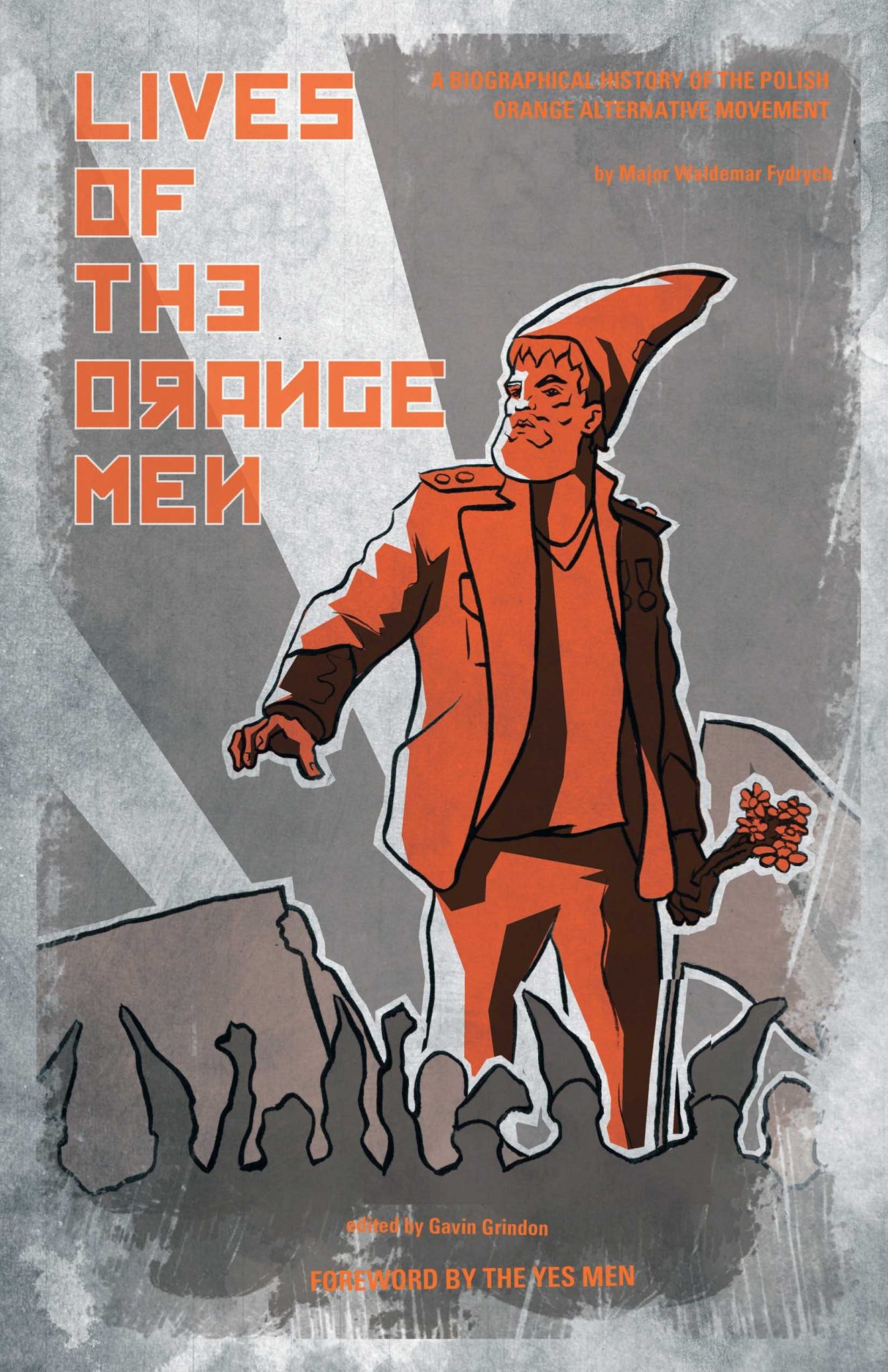It is something of a cliché to say the Spanish experienced what the rest of Western Europe went through in the 1960s in the 1980s, after being freed from the yoke of Franco’s fascist dictatorship. The same might be said of Eastern Europe as it extricated itself from the clutches of Bolshevism. That’s certainly the impression created by this eyewitness account of the Orange Alternative by one of its prominent activists, Major Waldemar Fydrych.
The Orange Alternative practised what it dubbed ‘social Surrealism’ to parody the state capitalist dictatorship in Poland and its socialist realist art. This loose group of activists restaged the storming of the Winter Palace (a key incident in the Bolshevik seizure of power) using cardboard tanks and ships that the actors wore as costumes; likewise they handed out toilet paper in the streets when there was a shortage of this commodity. Fydrych explains his involvement in these actions in this way: ‘I make dialectical art… in other words I act upon consciousness and treat everything as a work of art.’ Many of the Orange Alternative’s actions echo neo-dadaist and related activity in the West in the 1960s. For example: ‘The day of the happening…was an evening full of surprises… the militia tried to arrest the Santa Clauses. The Santas were protected against easy arrest by being tied together with a rope. While the militiamen were untying them, the crowd sang Sto Lat (A traditional Polish song, similar to For He’s A Jolly Good Fellow)… the crowd… sometimes chased the militiamen… chanting, “What are we to think? Santa’s in the clink!” and “Release Santa!”… Since it was St. Nicholas Day, the militiamen also arrested professional Santa Clauses coming out of department stores with presents.’
This brings to mind the Black Mask intervention at Macy’s in the late 1960s where one member of the group dressed up as Santa Claus and handed out free toys to children. The kids were then treated to the edifying spectacle of seeing Santa arrested and having their toys snatched back from them by the cops. The stunt was repeated at Selfridges in London by the King Mob group.
The Orange Alternative also made much use of imagery involving what David French translates as dwarves (but might have been better served by English terms such as gnomes, elves or leprechauns) both in their happenings and as graffiti. This imagery appears to be inspired by the Kabouters (gnomes in English), a Dutch anarchist group of the early 1970s, which was in turn an offshoot of the 1960s Provo movement. This use of the term dwarves brings up the issue of the somewhat clumsy translation. For example: ‘Only the undercover agents raised their hands and waved. They smiled friendlily.’ Fortunately such clunky language doesn’t obscure the humour at work both in Fydrych’s text and the Orange Alternative’s street actions. Talking about graffiti in public toilets, our deliberately unreliable eyewitness writes: ‘At that time, toilets were the only Speakers’ Corner; where there was democracy and opposition to the authorities. In a toilet, you could be free.’
At the core of this book are biographies of various Orange Alternative ‘leaders’ written in a style parodying state propaganda of the Bolshevik era; and with Fydrych devoting about 170 pages to himself (written in the third person of course) and only a dozen or so pages apiece to seven others. The publication also includes translations of original manifestos from the 1980s, alongside a host of graphics and black and white photographs documenting street actions. After Fydrych’s endless joking and humorous distortions, the text concludes with what appears to be a reliable timeline of the street happenings he organised with his friends. Lives Of The Orangemen looks set to spread the word about the Orange Alternative in the same way that Chris Gray’s Leaving The 20th Century (1974) popularised the Situationist International in the mid 1970s.
This article originally appeared in the October 2014 issue
